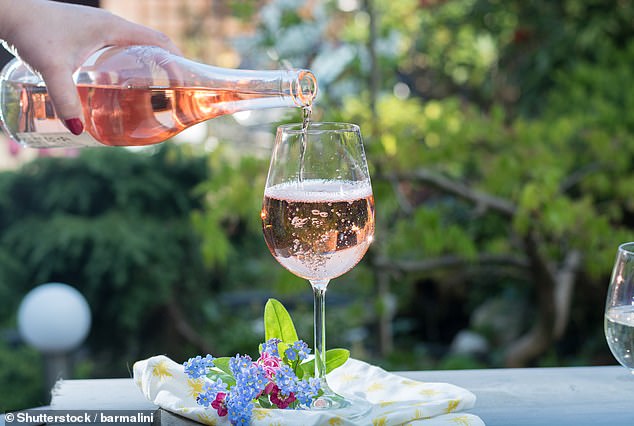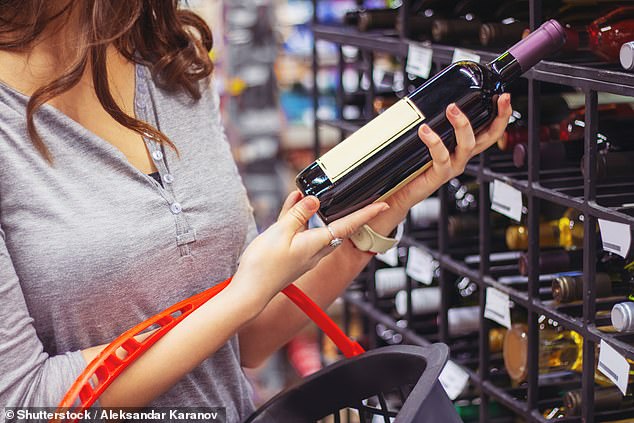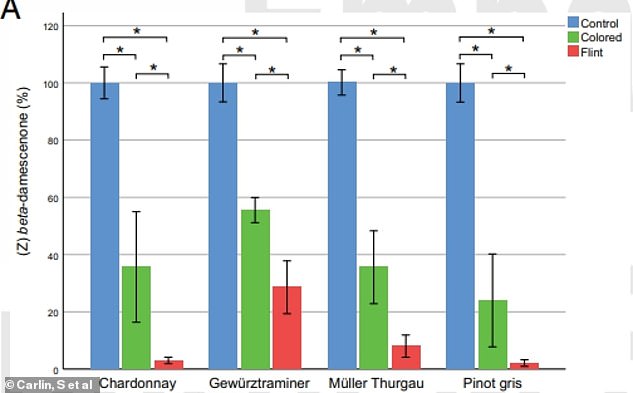Why you should only buy wine in DARK bottles: Graphic shows how clear barrels can make white and rosé varieties smell like boiled cabbage and wet dog (regardless of price!)
From a rich Chardonnay to a refreshing Pinot Grigio, most supermarkets have a wide range of delicious wines to choose from.
But if you’re not a seasoned wine connoisseur, deciding which bottle to buy can be a tricky process.
Now experts have revealed that when it comes to white or rosé wines, you should always opt for varieties that come in dark bottles.
Clear bottles allow sunlight to reach the wine, which can lead to a phenomenon called “sunstroke.”
At worst, this can lead to your wine tasting like wet dog, boiled cabbage and drain – regardless of how much you paid for it.
Clear bottles allow sunlight to reach the wine, which can lead to a phenomenon called “sunstroke.” At worst, your wine could taste like wet dog, boiled cabbage and drain – no matter how much you paid for it

Experts have revealed that when it comes to white or rosé wines, you should opt for varieties that come in dark bottles (stock image)
Wine stored in clear ‘flint glass’ bottles will almost certainly taste worse than even a cheaper wine stored in a colored bottle.
The reason for this is that clear glass does not prevent UV rays from the sun or artificial light from reaching the wine.
When UV rays hit the wine, they cause amino acids to react and form sulfur compounds.
These compounds are responsible for the unpleasant odor associated with many bottles of white and rosé.
In direct sunlight this can begin to destroy the flavor of the wine in as little as 30 minutes.
“The scale of this problem is probably far greater than any other wine odor, and yet we don’t really talk about it,” says Susie Barry, a Master of Wine, told the Times.
‘Most of the time we continue to pretend that it is not a problem, when in fact it deprives us of the rightful enjoyment of wine. It’s daylight robbery in every sense of the word.’

Colored bottles prevent light from reaching the wine. This light can lead to the formation of sulfur compounds that give the aroma of cooked cabbage and wet dog (stock image)
A 2022 study from the University of Trento found that bottles of Chardonnay and Pinot Grigio, stored in clear bottles, showed a significant increase in a chemical called 4-hepten-1-ol.
“These foul-smelling compounds appear to be responsible for the unpleasant taste of cooked cabbage and sometimes form in wine exposed to a light source,” the researchers wrote in their study. published in PNAS.
In addition, wine stored in clear bottles showed a significant reduction in the chemicals responsible for pleasant flavors after just a week in the sun.
The wines experienced a 10-30 percent loss of terpenes – compounds that give wines their floral and fruity notes – and a 30-70 percent loss of norisoprenoids – compounds responsible for complex woody notes.
Meanwhile, bottles stored in colored bottles showed no increase in unpleasant chemicals and retained the pleasant taste for 50 days.

Their analysis found that over seven days the wines experienced a 30 to 70 percent loss of norisoprenoids, including beta-damescenone – compounds responsible for complex woody notes.
And to make matters worse, it is the wines most commonly stored in clear bottles that are being hit hardest.
Because white and rosé makers often like to show off the color of their wine, they typically opt for clear over colored glass.
However, lighter, delicate wines are more affected by light strikes.
Chris Mercer, of wine magazine Decanter, says: ‘White wines at greatest risk generally, especially the more delicate styles, plus sparkling wines and rosé wines.’
Red wines, on the other hand, are more resistant to light exposure because they contain a higher content of polyphenols.
These compounds in grapes take longer to be broken down by light, which preserves their flavor longer.
Mrs Barry said: ‘What is not good at all is putting the wine in a clear, colorless glass as that lets in most light, including the most harmful types.
‘And what kind of wine is usually bottled in clear glass? The most vulnerable wine varieties, of course.’
The experts say you can avoid some of the problems by storing your wine in a cool, dark place, away from direct sunlight.
However, some suggest that it would be better not to buy wine in clear bottles at all.
Mark Driver, a winemaker and owner of Rathinny Estate in Sussex, said: ‘Next time you reach for a bottle of rosé, or a more delicate white such as a Pinot Gris or Blanc, look for one in a dark green or amber colour. colored bottle, just to be sure.’
